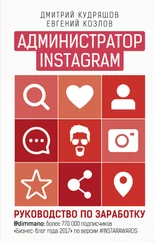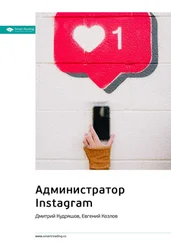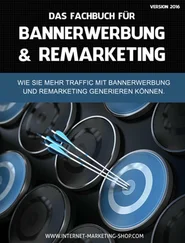Our final chapter pulls all of the threads together, examining the cumulative impact of the platform: from the Everything of Instagram, to the Instagram of Everything. We look at the materialization of Instagram in everything from stickers and posters to Instagram-themed cameras and bespoke app integration in new phones. We examine the impact of Instagram on popular culture more broadly, and interrogate the phenomenon of virtual Influencers, digital amalgams of design, storytelling, communication and art who command large Instagram audiences but do not exist in the material world beyond the platform. We argue that Instagram use has shifted from a focus on filters, to an era of templatability, where new aesthetic and communication norms are established by celebrities and Influencers that ripple through the platform, establishing the fleeting vernacular norms of the day. We conclude, dabbling in alliteration, and suggest a framework of eight ‘A’s to understand the future of Instagram: affordances and algorithms; aesthetics and affect; attention and audiences; and agency and activism.
Over to You: Instagram the Instagram Book!
Now that you’re reading this book, we have a request: we’d love to know where you’re reading and what you think of the book. We would enjoy hearing your reactions, questions, thoughts, constructive criticism or even suggestions for future additions if there’s enough interest to one day do a second edition of Instagram: Visual Social Media Cultures . The most obvious way to share with us, as you might imagine, is to take a photo on Instagram and use the hashtag #polityinstabook, or tag us at @polityinstabook, or if you’d like to send us a message directly, either use the Direct Message function, or tag us in Stories. If you’d like to follow the book’s account on Instagram you are more than welcome; we aim to repost some of the places people are reading, and the thoughts they share with us amongst other Instagram-related material. To follow us on Instagram, you can also just scan our nametag in the image below (figure i.1). We’re on Twitter as well (also @polityinstabook) if you would like to follow us there, where we’ll be tweeting and retweeting news about Instagram.

Figure i.1.Instagram nametag for @polityinstabook
In this first chapter, we explore the emergence and history of Instagram as an app and, quite quickly, a platform. While the term platform is a loaded one (Gillespie 2010), the use of the term here is specifically to draw attention to the fact that Instagram is more than one thing: it is an app; it is a series of programs and algorithms; it is a gigantic database of images, videos, captions, comments, geolocative tags, location tags, likes, emoji and more and more items over time; it is a collection of personal data (connected with similar sets of personal data after the purchase by Facebook); it is an application program interface (API) which enacts rules to allow different apps, platforms and partners to access, add or remove data from the Instagram database; it is a series of decisions and developments over time that create different versions of each of these things; and it also encapsulates various popular understandings of what Instagram ‘is’ to the more than a billion people who use it. In short, describing Instagram as a platform offers a continual reminder that Instagram is many different things, some at the same time, and some that have quite radically changed over time.
Similarly, in discussing the politics of Instagram, we are not talking about the political influence of the platform (although that is important, and explored near the end of this chapter), but rather we are highlighting the importance of specific decisions and changes which have made Instagram what it is today. While we’re outlining some of the major events and decisions that have shaped Instagram, this chapter is by no means exclusive; for a more robust change-by-change outline of Instagram, see the Appendixwhich offers a chronology of Instagram’s various versions and alterations. In this chapter, we are focusing on a few of the bigger changes and moments that have shaped the platform, and use these to situate the platform, and the company, in a broader context. In exploring Instagram, we are always mindful of the broader visual social media landscape of which Instagram is a part, but hope that this exploration of Instagram illuminates more about this broader context as well.
Instagram founders Kevin Systrom and Mike Krieger initially began working together on an app in 2010, but it was not focused on photography at all. Rather, inspired by the emergence of location-based check-in apps, the pair were developing a Foursquare competitor, a check-in app called Burbn, based on locating and sharing details of the best bourbon locations. After realizing their app was unlikely to compete with a glut of locative media apps, the two completely stripped their work back to photos, comments and likes with an optional check-in (Swisher 2013).
After experimenting with a number of designs and names, the two settled on Instagram. As Systrom (2011) recalls, they ‘renamed because we felt it better captured what you were doing – an instant telegram of sorts. It also sounded camera-y.’ While Instagram is well known as an app which changed photography, it’s worth remembering that the immediacy of ‘instant’ was the most important thing at the beginning. The communication that photography allowed, rather than fidelity to the photographic form, is at the very root of the platform’s success. When the app began testing in July 2010, the icon was originally a rendering of an existing instant Polaroid camera, but the complexity of this icon, and potential copyright issues, meant a memorable image was needed. The iconic Instagram app design – which was still broadly inspired by a polaroid camera – was thus designed by Cole Rise and was largely unchanged for the first four years of Instagram (Heath 2014). Cole Rise was also responsible for seven of the original Instagram filters including, unsurprisingly, Rise. Instagram officially launched in the Apple App Store on 6 October 2010, as an iPhone app which allowed instant photography within a square frame (images could not be loaded from the phone’s gallery), with a series of filters to add different stylistic feels to images, and the ability for followers to like or comment on each image.
Notably, Instagram did not invent photo sharing, or photo filters, or even square frames. Instagram’s success was based, in part, on their successful integration and balancing of these elements, but all of them existed at the time in other apps which pre-dated Instagram. The Hipstamatic app, for example, was launched in December 2009 and introduced filters and square frames to iPhone users, and was so successful it was named as one of Apple’s Apps of the Year for 2010. In early 2011, New York Times photographer Damon Winter won a Picture of the Year International prize for images of US troops in Afghanistan that were taken and processed using Hipstamatic’s filters (Winter 2011). The big differences, though, were that Hipstamatic was a paid app ($1.99) and the focus was on the experience of taking and editing a photo, with sharing as secondary (Carter & Maclean 2012). However, on Instagram the social experience – of gaining likes and comments – was central, even if the affordances were largely similar (Vaidhyanathan 2018). While Hipstamatic is still available today, it has a tiny fraction of Instagram’s user numbers. In a bittersweet retrospective interview in 2017, the founders of Hipstamatic noted that their app had a ‘major role to play in the very existence of Instagram’ (Downs & Koebler 2017). Nor was Hipstamatic the only competing app that Instagram had to contend with when it launched.
Читать дальше













